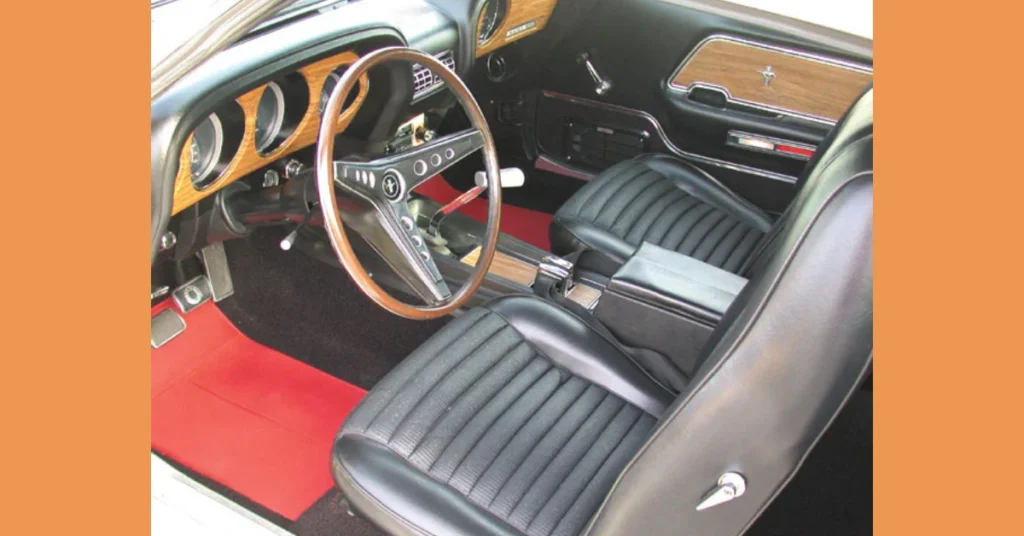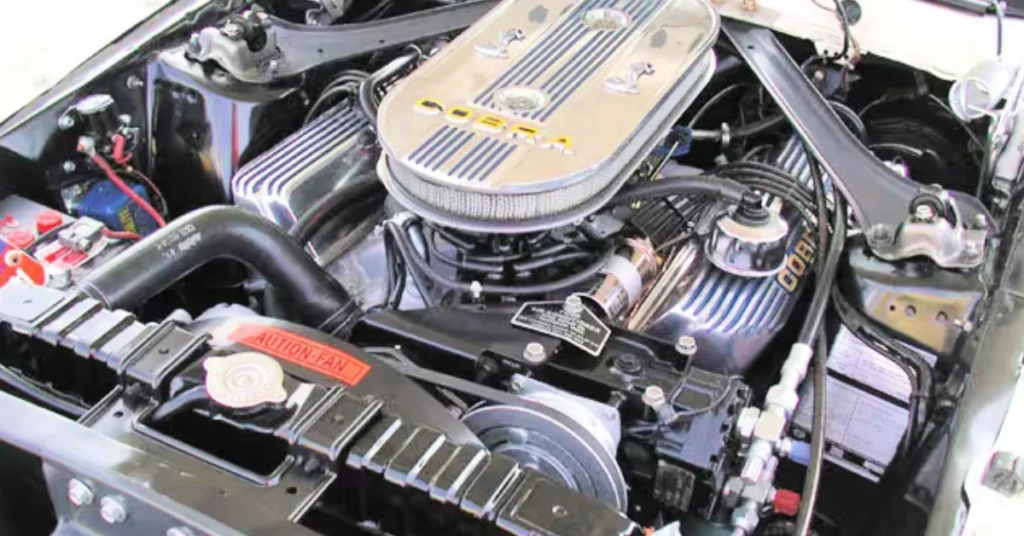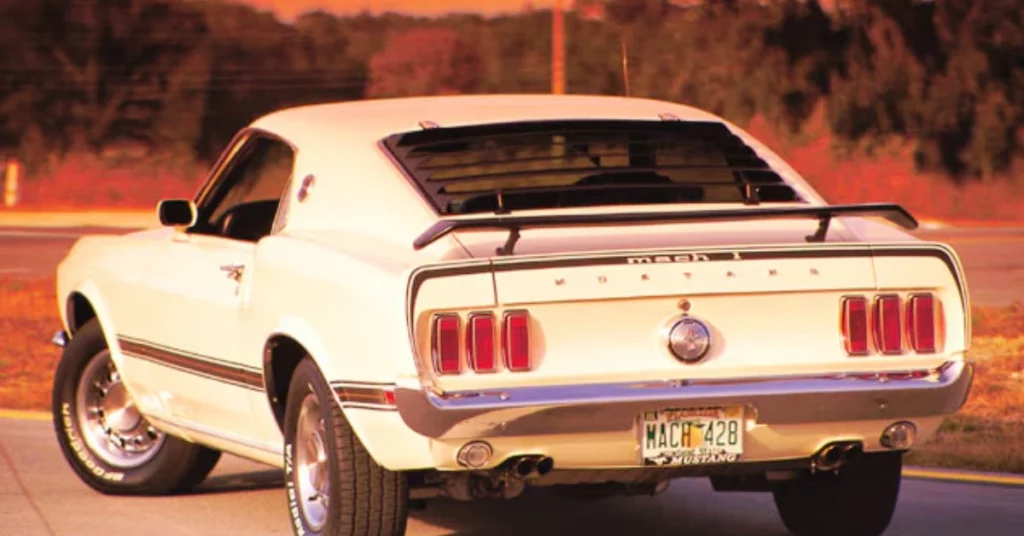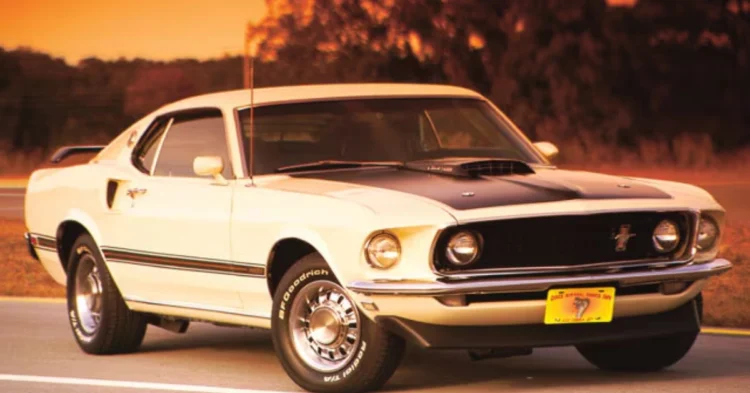The 1970s were a golden era for American muscle cars, and few captured the spirit of the time like the 1968 Ford Mustang Mach 1. With its ferocious power, sleek design, and starring roles in Hollywood blockbusters, this iconic vehicle became a cultural phenomenon. Today, its rarity and historical significance make it a coveted treasure among collectors, with values soaring into the stratosphere. This article dives into the origins, cinematic legacy, design, performance, and enduring appeal of the 1968 Ford Mustang Mach 1, revealing why it remains one of the most celebrated cars in automotive history.
Table of Contents
The Birth of the Ford Mustang Mach 1
A New Breed of Mustang
Introduced in 1964, the Ford Mustang redefined the American automotive landscape by blending sporty styling with affordable performance. By 1968, Ford sought to elevate the Mustang’s image in the face of growing competition from rivals like the Chevrolet Camaro and Dodge Challenger. The result was the Mustang Mach 1, a high-performance variant launched for the 1969 model year but built on the 1968 platform, designed to dominate both the streets and the racetrack.
The Mach 1 was positioned as a premium model, combining aggressive aesthetics with powerful engine options. Its name, inspired by the speed of sound, signaled Ford’s ambition to create a car that was as fast as it was stylish. The 1968 Mustang Mach 1 quickly became a favorite among enthusiasts, setting the stage for its Hollywood stardom.
A Star in the Making
The Mach 1’s cinematic journey began in the 1970s, most notably with its iconic role in the 1974 film Gone in 60 Seconds. Driven by the film’s protagonist, the Mach 1, nicknamed “Eleanor,” became a symbol of rebellion and raw power, captivating audiences with its daring chase scenes. This role cemented the Mach 1’s status as a Hollywood legend, a legacy that continues to influence its value and popularity today.
Liam Neeson’s 1970 Dodge Challenger: The Iconic Muscle Car That Shined in ‘The Grey’
The 1970 Pontiac GTO Judge Ram Air IV: The Rarest and Most Exclusive Muscle Car of the 1970s
1990s Geo Metro: The Forgotten Champion of Fuel Efficiency in American Automotive History
The Mach 1’s Hollywood Legacy
Stealing the Show in Gone in 60 Seconds
In Gone in 60 Seconds (1974), the 1968 Ford Mustang Mach 1, painted in a striking yellow with black stripes, took center stage as “Eleanor.” The film’s climactic 40-minute chase sequence showcased the car’s speed, agility, and durability as it evaded police through the streets of Los Angeles. The Mach 1’s performance in the movie was so memorable that it became one of the most iconic cars in film history, inspiring countless replicas and tributes.
The original Gone in 60 Seconds was a low-budget production, but its raw energy and the Mach 1’s star power resonated with audiences. The car’s rugged charm and relentless performance mirrored the film’s gritty narrative, making it a perfect match for the story of a car thief outrunning the law.
A Lasting Cinematic Influence
The Mach 1’s fame was reignited in 2000 with the remake of Gone in 60 Seconds, starring Nicolas Cage. While the remake featured a 1967 Shelby Mustang GT500 as “Eleanor,” the 1968 Mach 1’s legacy as the original Eleanor remained untarnished. The car’s appearances in other films, TV shows, and video games further solidified its status as a cultural icon, ensuring its place in the pantheon of Hollywood’s greatest cars.

Design and Features of the 1968 Mustang Mach 1
Aggressive and Timeless Styling
The 1968 Ford Mustang Mach 1 was a visual masterpiece, embodying the bold aesthetic of the muscle car era. Its fastback body, with a sleek roofline and sculpted lines, exuded speed even at a standstill. Distinctive features included a blacked-out hood with functional scoops, chrome trim, and Mach 1-specific badging. The car’s aggressive stance was enhanced by styled steel wheels and optional racing stripes, available in colors like Candyapple Red, Acapulco Blue, and Wimbledon White.
The interior was driver-focused, featuring high-back bucket seats, a center console, and a sporty steering wheel. The dashboard included a tachometer and speedometer, with optional deluxe features like woodgrain accents and an AM/FM stereo. While not luxurious, the Mach 1’s cabin balanced comfort and performance, making it ideal for both daily driving and spirited runs.
Engine Options and Performance
The 1968 Mustang Mach 1 offered a range of powerful engines, catering to performance enthusiasts:
- 351-cubic-inch V8: The base engine, producing 250 horsepower, offered a balance of power and efficiency.
- 390-cubic-inch V8: Delivering 325 horsepower, this big-block V8 provided robust acceleration.
- 428 Cobra Jet V8: The top-tier option, rated at 335 horsepower (though likely closer to 400 in reality), made the Mach 1 a drag-strip champion.
The 428 Cobra Jet, equipped with a functional hood scoop and heavy-duty suspension, was the engine of choice for the Mach 1 in Gone in 60 Seconds. Paired with a four-speed manual transmission or a three-speed automatic, it propelled the car from 0 to 60 mph in around 5.5 seconds and through the quarter-mile in the low 14-second range.

Performance and Driving Experience
Power and Agility
Driving the 1968 Ford Mustang Mach 1 was an exhilarating experience. The big-block V8 engines delivered thunderous acceleration, accompanied by a deep, unmistakable exhaust note. The four-speed manual transmission allowed drivers to harness the car’s power with precision, while the automatic option offered smoother shifts for cruising. On the road, the Mach 1’s responsive steering and firm suspension provided confident handling, though its weight made it better suited for straight-line speed than tight corners.
Reliability and Maintenance
The Mach 1 was built for durability, with robust engines and a solid chassis. However, like many muscle cars of the era, it was prone to rust in harsh climates, and high-performance components like the Cobra Jet engine required regular maintenance. Today, owners face challenges sourcing original parts, but a strong aftermarket ensures the Mach 1 remains restorable. Well-maintained examples are reliable, with many still driven regularly at car shows and rallies.
Cultural Impact and Collectibility
A Symbol of American Muscle
The 1968 Ford Mustang Mach 1 transcended its role as a car to become a cultural icon. Its starring role in Gone in 60 Seconds made it a symbol of freedom, rebellion, and raw power, resonating with a generation of car enthusiasts. The car’s influence extended beyond film, appearing in music videos, video games, and car culture events, where it continues to inspire awe.
Skyrocketing Value
Today, the 1968 Ford Mustang Mach 1 is a collector’s dream, with values reflecting its rarity and cultural significance. Base models with smaller engines start at $50,000-$70,000, while Mach 1s equipped with the 428 Cobra Jet can fetch $100,000-$150,000 in concours condition. Examples with documented Hollywood provenance, particularly those linked to Gone in 60 Seconds, command even higher prices, with some selling for over $200,000 at auction. The car’s scarcity, combined with its iconic status, ensures its value continues to climb.

The Mach 1’s Enduring Legacy
Inspiring Modern Muscle Cars
The 1968 Mustang Mach 1’s influence is evident in modern muscle cars like the Ford Mustang Shelby GT500 and Dodge Challenger SRT Hellcat, which draw on the same blend of bold styling and brute force. Ford revived the Mach 1 name in 2003 and again in 2021, paying homage to the original’s legacy while introducing new generations to its heritage.
A Timeless Classic
The Mach 1’s appeal lies in its ability to evoke nostalgia while remaining relevant. For collectors, it’s a tangible link to the muscle car era and Hollywood’s golden age. For enthusiasts, it’s a reminder of a time when cars were built for passion, not just practicality. Whether admired on screen or cherished in a garage, the 1968 Ford Mustang Mach 1 remains a wild and untamed icon.
Conclusion
The 1968 Ford Mustang Mach 1 is more than a car—it’s a legend that conquered Hollywood and continues to captivate the world. Its starring role in Gone in 60 Seconds, combined with its breathtaking design and ferocious performance, made it a standout in the 1970s and a priceless classic today. As a symbol of American muscle and cinematic history, the Mach 1’s legacy endures, proving that some cars are destined to steal the show forever.

